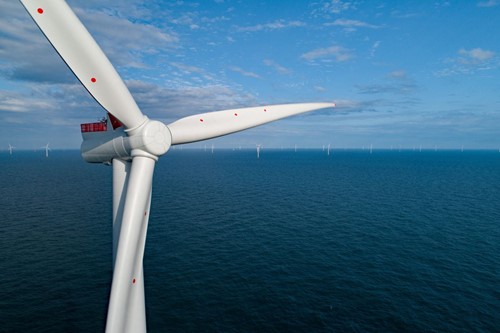News
Consortium receives funding to investigate offshore hydrogen production

The Fuel Cells and Hydrogen 2 Joint Undertaking (FCH2-JU), a public private partnership of the European Commission, has awarded the consortium behind the OYSTER project, consisting of ITM Power, Ørsted, Siemens Gamesa Renewable Energy, and Element Energy EUR 5 MM ($6.13 MM) to investigate the feasibility and potential of combining an offshore wind turbine directly with an electrolyzer and transporting renewable hydrogen to shore. The consortium will develop and test a megawatt-scale fully marinised electrolyzer in a shoreside pilot trial. The project will be coordinated by Element Energy.
To realize the potential of offshore hydrogen production, there is a need for compact electrolysis systems that can withstand harsh offshore environments and have minimal maintenance requirements while still meeting cost and performance targets that will allow production of low-cost hydrogen. The project will provide a major advance towards this aim.
The electrolyzer system will be designed to be compact, to allow it to be integrated with a single offshore wind turbine, and to follow the turbine's production profile. Furthermore, the electrolyzer system will integrate desalination and water treatment processes, making it possible to use seawater as a feedstock for the electrolysis process.
The OYSTER project partners share a vision of hydrogen being produced from offshore wind at a cost that is competitive with natural gas (with a realistic carbon tax), thus unlocking bulk markets for green hydrogen making a meaningful impact on CO2 emissions, and facilitating the transition to a fully renewable energy system in Europe.
This project is a key first step on the path to developing a commercial offshore hydrogen production industry and will demonstrate innovative solutions with significant potential in Europe and beyond.
The project is planned to start in 2021 and run to the end of 2024. ITM Power is responsible for the development of the electrolyzer system and the electrolyzer trials, while Ørsted will lead the offshore deployment analysis, the feasibility study of future physical offshore electrolyzer deployments, and support ITM Power in the design of the electrolyzer system for marinization and testing. Siemens Gamesa Renewable Energy and Element Energy are providing technical and project expertise.
Dr. Graham Cooley, CEO of ITM Power, said:
"ITM Power are delighted to be part of this exciting project, working alongside industry leaders to explore the potential to harness wind for offshore green hydrogen production."
Anders Christian Nordstrøm, Vice President and Head of Ørsted's hydrogen activities, said:
"To create a world that runs entirely on green energy, we need to electrify as much as we can. However, some sectors cannot decarbonize through electrification and that's where renewable hydrogen could play a significant role. Offshore hydrogen production could be a future, supplemental way of getting large amounts of energy generated from offshore wind power to shore. As the largest offshore wind company in the world, we're of course keen to better understand what it will take to produce renewable hydrogen offshore as a potential future supplement to production of renewable electricity. Having pioneered the offshore wind industry, we know that thorough analysis and testing are required before deploying new technologies at sea."
Bart Biebuyck, Executive Director, Fuel Cells and Hydrogen Joint Undertaking (FCH JU), said:
"The OYSTER project is a very exciting addition to the FCH JU pallet of electrolysis projects that will allow the development of an offshore-spec electrolyzer for green hydrogen to be generated in the harsh offshore environment. The aim is the optimal integration of electrolyzers with offshore wind turbines to store the energy generated in the form of hydrogen. We are absolutely delighted to support this innovative project which reduces the environmental impact in further industrial applications."
Michael Dolman, Associate Director at Element Energy, said:
"Offshore wind is now one of the lowest cost forms of electricity generation in Europe and will have an important role in Europe's decarbonization plans. There is growing interest in transporting renewable energy in the form of hydrogen, particularly for sites far from shore. Realizing such a vision will require further development and innovations of the type to be demonstrated in the OYSTER project, which Element Energy is pleased to coordinate."
About the OYSTER project and the FCH2-JU
This project has received funding from the Fuel Cells and Hydrogen 2 Joint Undertaking (FCH2-JU) under grant agreement No. 101006751. This Joint Undertaking receives support from the European Union's Horizon 2020 research and innovation program, Hydrogen Europe, and Hydrogen Europe Research. The FCH2-JU is a unique public-private partnership supporting research, technological development, and demonstration (RTD) activities in fuel cell and hydrogen energy technologies in Europe. Its aim is to accelerate the market introduction of these technologies, realizing their potential as an instrument in achieving a carbon-clean energy system.

